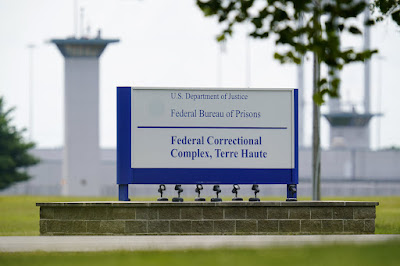From bite marks to shaken babies, the Center for Integrity in Forensic Sciences is debunking bad science.
Kate Judson is a lawyer who often deals with crimes that did not occur. As the executive director of the Wisconsin-based Center for Integrity in Forensic Sciences (CIFS), her job is to examine ostensible scientific evidence to see whether it backs up prosecutors' claims.
"Some people who died were classified as victims of homicide when they were really the victim of illness, or accident, or suicide, or medical error—that kind of thing," says Judson. "We had a case of a family that lost their child. The caregiver was accused of attacking her. It was later discovered, based on new medical evidence, that the child had been really ill with a disease she was probably born with."
Evidence can't bring a child back, obviously. But it can get an innocent person out of jail. And it can give a grieving family some peace of mind. To learn that your child "was held and comforted in their last moments, instead of attacked," says Judson, "would be important to know."
When the center was founded four years ago, Judson left her job as a public defender to become its first employee. Now a staff of four works to keep bad science out of the courtroom. This includes:
Ballistics
Scientific proof "that you can match a projectile to its weapon is just not there," says Judson. While you can tell if a bullet comes from a particular type of gun— say, a Glock—that doesn't mean you can identify the specific gun that fired the bullet.
In the seminal case United States v. Tibbs, a D.C. Superior Court judge ruled that a ballistics expert could not testify that a gun discarded by Marquette Tibbs near a crime scene was indisputably the source of the casings found there. Why not? Because the ballistics field is really shaky, the judge determined, and lacks "validity."
Hair identification
In 2009, the National Research Council published a report about forensic science "and that really marked a turning point in the birth of the forensic reform movement," says Judson. "It was the first time a big government agency brought together scientific experts and legal experts and said, 'Let's talk about what they're saying in court and whether it passes scientific muster.'"
One big topic was hair samples. A hair with its root can provide actual DNA evidence, says Judson. But other comparisons of color and texture, even examined under the microscope, have led to many wrongful convictions. She points to the case of Santae Tribble, convicted of murder at 17, despite evidence that he had been elsewhere when the crime occurred.
An FBI analyst at his trial testified that there was just a one in 10 million chance that the hair found on a stocking mask at the crime scene belonged to someone other than Tribble.
But after spending over 20 years in prison, Tribble was cleared when the hairs were retested and none of them matched. (At least one was dog hair.)
The Innocence Project, which works closely with the CIFS, got the FBI to admit that "even when hairs seem microscopically indistinguishable," it really couldn't say how unique those similarities are.
Bite marks
"They're not even good at counting the number of teeth," says Judson.
One of the more famous bite mark cases involved a woman raped, beaten, bitten, and stabbed to death in Wisconsin in 1984. A dental scientist named Lowell Thomas Johnson said the marks came from someone missing a tooth. When a neighbor, Robert Stinson, was questioned—and seen missing a tooth—he was charged with murder. The bite marks were the only evidence against him.
He served 23 years. Then the Wisconsin Innocence Project got hold of the DNA of the saliva and blood on the victim's sweater. These didn't belong to Stinson. Instead, they belonged to another prisoner, Moses Price, who was serving 35 years for committing a subsequent murder. Price confessed, and Stinson was exonerated.
Arson
"Have you ever seen, in a campfire, a piece of wood that looks like alligator scales?" asks Judson. "It's called 'alligatoring." Until recently, it was considered an indicator of arson.
Another supposed indicator was "something they used to call 'crazed glass,'" Judson says. "It's a pattern of breakage that they used to say came from arson. But after, again, real scientific experimentation, it turns out that that happens when hot glass gets water poured on it."
Forensic analysts have been able to prove that even when a house burns down inadvertently, there can be evidence of crazed glass and alligatoring.
"They found that fires, whether or not they involve any arson, whether or not they involve any accelerants, can get to the point that it's so hot that the air becomes super-heated and everything ignites at once," she says.
Shaken babies (SBS)
A theory used to hold that if a baby died, and an autopsy found some specific symptoms—including bleeding behind the eyes—the child had likely been shaken to death.
Then, 10 years ago, physicians Marcus Salvatori and Patrick Lantz had a novel idea: They performed autopsies on four children ages 3 and under who had died from infections. Those infants had evidence of bleeding behind the eyes as well.
At least 30 people have been exonerated after serving years or decades for supposedly shaking a baby to death.
"You don't expect kids to die, but the truth is, some do," says Judson. "And some die with unexplained bleeding."
That can lead to a conviction, even though a crime never occurred.





.jpg)







